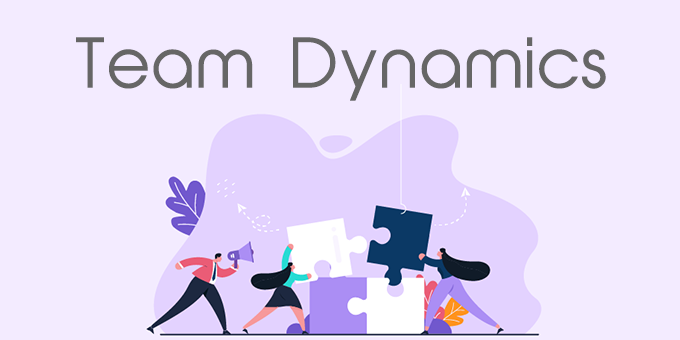As a team leader, the success of your mission is heavily reliant on the effectiveness of your team dynamics. However, even the most experienced leaders can struggle with executing their missions as intended.
A team with strong dynamics is one where all members feel valued and are able to contribute effectively towards shared goals, rather than pursuing individual agendas.
In this article, we will delve deeper into the importance of team dynamics and explore practical strategies for harnessing its power. By prioritizing positive team dynamics, you can unlock your team’s full potential and achieve success beyond your expectations.
Team Dynamics: Definition and Role
To some leaders, perfect teamwork is like a relay race, where each member delivers a top-notch performance in their designated role and passes the baton seamlessly to the next person. Others regard it like a football game, in which people have specific roles but also would adjust to the changing situations on the field. However, teams usually need to operate in both ways depending on the type of tasks and situations. This is what team dynamics refers to: how team members interact, communicate, and work together.
Kurt Lewin, an influential social psychologist, first defined team dynamics in 1939 as “positive and negative forces within groups of people.”
Team dynamics are, often, unconscious psychological processes that exist within a team, influencing team performance like undercurrents in the sea. They are shaped by the nature of the work, members’ characteristics, and the quality of relationships within the team.
Only with a positive team dynamic, can a leader expect efficient teamwork.
The Features of a Positive Team Dynamics
Now, the question is what common qualities exist in positive team dynamics? How leaders can foster team dynamics? How we can diagnose ills in dysfunctional teams?
There are different models for understanding team dynamics. To evaluate teams, the DiSC theory only takes personality traits into account, providing insight into members’ work habits and interaction preferences. It suggests that team performance relies on members’ characteristics and how effectively they complement each other.
Richard Beckhard, a pioneer in the field of organizational development, proposed four critical areas upon which teams should be evaluated: shared goals, defined roles and responsibilities, clear processes, and interpersonal relationships.
According to a study published in the Harvard Business Review, effective communication both within and outside of the team is the most significant predictor of team performance.
Building on previous studies, we concluded seven most important features of a positive team dynamic as follows:
1. Member Characteristics
A successful team requires individuals with diverse skill sets, including both detail-oriented members and those who can see the big picture for instance. Hence, to optimize team dynamics, it’s essential to have a well-matched team.
In the past, it was challenging to evaluate and match members based on their unique characteristics, but with the help of AI, this process has become more manageable. By analyzing self-assessment surveys and previous performance within a team, AI can match individuals with those teammates who complement their skills.
Learn how Pandos AI-powered Team Formation help create well-matched teams
2. Brand
Brand in a team refers to how the team is perceived by those out of the team. How others would describe your team. The team brand unconsciously affects members’ expectations and focus.
Learn how Pandos Team Profile can help build the team brand
3. Shared Goals
Long- and short-term goals set a clear direction and purpose for team actions. Having well-defined goals provide focus and motivation, and allow for progress to be tracked and measured. Besides defining the goals, it is also critical to efficiently communicate those goals with the members and align their objectives with broader team goals.
Read more about the importance of having a shared vision and objective alignment
4. Clear Roles
Positive team dynamics requires each member to have a clear understanding not only of their own role and responsibilities within the team, but also the role and responsibilities of their fellow team members. This shared understanding fosters effective collaboration and synergy, and allows the team to achieve its objectives efficiently and with high quality.
Learn how Pandos Org Chart can help
5. Process
Process indicates how team members approach the problems, resolve conflicts, and make decisions. Having a clear process for solving routine issues contributes to positive team dynamics.
Check Pandos Task submission process
6. Relationships
Interpersonal relationships might be the most complicated part of the team dynamics. There are multiple factors that can strengthen or destroy interpersonal relationships. But a key term that is usually emphasized in this regard is trust.
Read more about building trust in virtual teamwork
7. Communication
For positive team dynamics, it is the leaders’ main responsibility to foster the culture of open communication within the team and the means to achieve it. To achieve this, they need to implement a mechanism in teamwork that involves all members in the process of discussing issues within the team and encourages them to contribute in decision-making.
Learn how Pandos helps for fostering communication (Private & Group Messaging, Peer Assessment, Task submission)
Cultivate Positive Team Dynamics with Pandos
To build strong team dynamics, it is crucial to leverage tools and strategies that foster employee engagement, collaboration, and alignment. Pandos provides a comprehensive platform that offers a wide range of features and tools designed to promote team dynamics. From motivating employees through recognition and rewards to fostering collaboration through team challenges, and aligning work through OKRs, Pandos can help you create a high-performance team that achieves its goals and objectives. By using Pandos, you can enhance employee engagement, boost productivity, and improve team dynamics, ultimately leading to greater success for your business.



